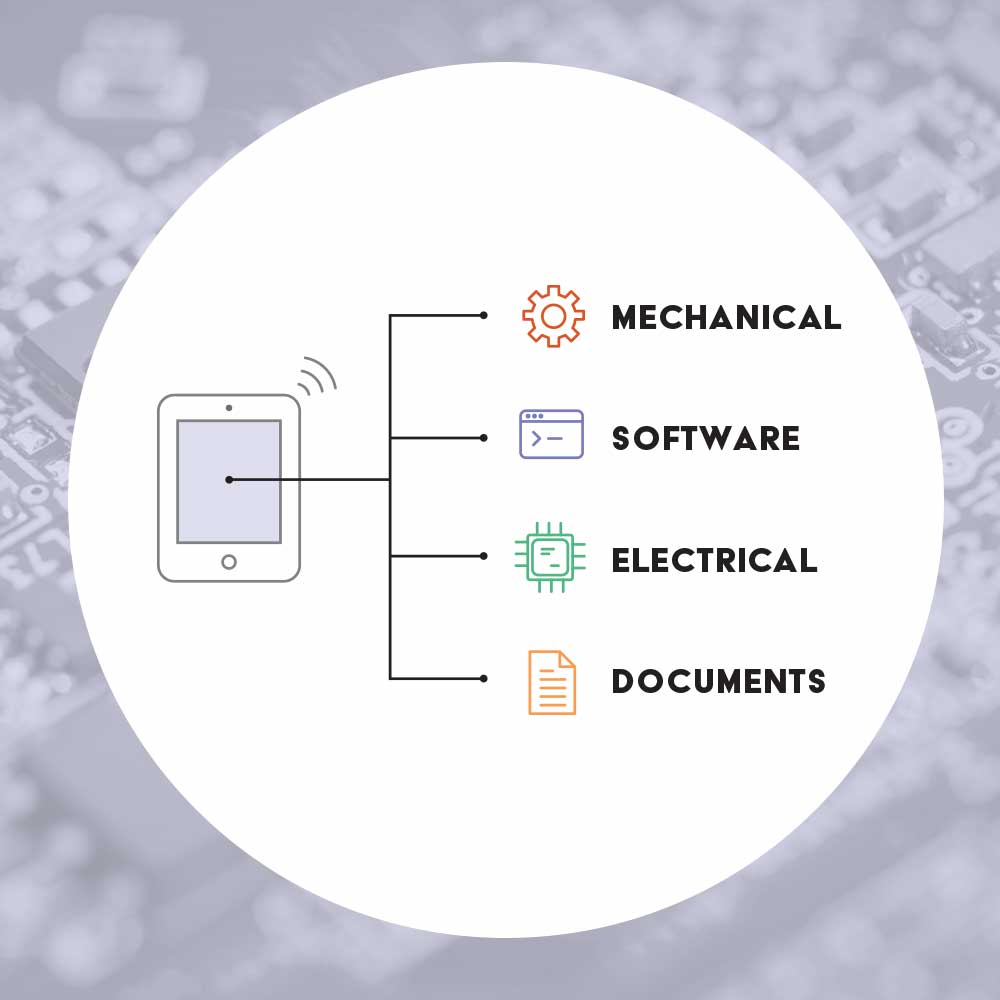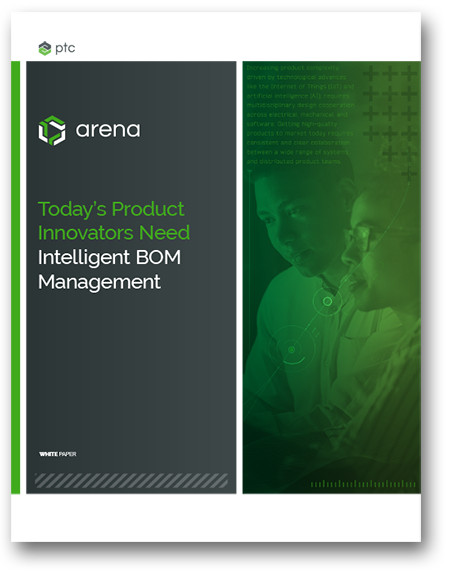Managing Your BOM: Spreadsheets vs. Product Lifecycle Management
 Manufacturers rely on the information that is included in the bill of materials (BOM) to build a product. The bill of materials typically includes part names, part numbers, part revisions, and the quantities required to build an assembly. Though BOMs can include more descriptive information too, for example, the unit of measure (UoM) or procurement type. BOMs that have printed circuit board assemblies (PCBAs) contain a column for listing reference designators. To manage what can be a tremendous amount of information, companies often use either spreadsheets or a dedicated BOM management system like Arena Product Lifecycle Management (PLM). Below are examples of how a bill of materials for a GPS navigation product would look in each system.
Manufacturers rely on the information that is included in the bill of materials (BOM) to build a product. The bill of materials typically includes part names, part numbers, part revisions, and the quantities required to build an assembly. Though BOMs can include more descriptive information too, for example, the unit of measure (UoM) or procurement type. BOMs that have printed circuit board assemblies (PCBAs) contain a column for listing reference designators. To manage what can be a tremendous amount of information, companies often use either spreadsheets or a dedicated BOM management system like Arena Product Lifecycle Management (PLM). Below are examples of how a bill of materials for a GPS navigation product would look in each system.
Spreadsheet Examples of Bills of Materials (BOMs)
Using spreadsheets to manage your BOMs provides some flexibility. However, using spreadsheets for BOMs makes it harder to control changes, revisions, and connections to the related drawings, documentation, and related quality or project information. This disconnected approach creates silos of information, often resulting in inconsistencies across your BOMs and confusion across your internal teams and external supply chain. The following two screenshots below illustrate a few ways to create and represent a spreadsheet-based bill of materials. The first one is very basic and the second example includes header information.
A Basic Bill of Materials
The basic BOM format separates information into columns. It contains BOM level, part number, part name, revision, quantity, and reference designators. It is also helpful to have the component parts’ unit of measure and BOM notes. The first line in the BOM is noted as level zero. Assembly number 20-0001 is the top-level assembly and contains the lower-level assemblies and components.
Example of a Spreadsheet-based BOM with a Header and Level Identification
Users can scan bills of materials and understand where particular parts are located when each level is denoted with a marker (e.g., an asterisk). The numerical BOM level can also be included. With the correct spreadsheet formula, this number can automate the placement of the visual marker in the correct column. The header provides a relatively clear overview or description of what components are in the assembly. When the top-level product or assembly information (level zero) is included in the header, it should not be repeated below. The items in your BOM should now start with level one.
Bill of Materials Example in Arena PLM
As a cloud-based solution, Arena PLM differs from spreadsheets in some significant ways. Arena’s BOM management capabilities leverage a relational database, which allows quick reconfiguration of information and an unlimited number of one-to-many and many-to-many relationships. It also allows for complementary information, like drawings, part specifications, and supplier options, to be included in a BOM without additional overhead. Here are some examples showing various types of bill of materials (BOM) capabilities and views within Arena PLM.
Indented Bill of Materials in Arena PLM
An indented BOM in Arena PLM contains all the same information as an is found on the spreadsheet-based BOM: part name, part number, and quantity information. However, the Arena BOM can be exploded or collapsed at every assembly level in order to see more or less depth as needed. It also includes links to extensive, related detail on individual subassemblies, parts, engineering change orders (ECOs), specifications, files, and more. Users can also see what the release phase is along with revision detail for every level of the indented BOM. Any time a given component is modified, the BOM will reflect the latest and greatest information.
Sourcing Bill of Materials in Arena PLM
In Arena, part sourcing information is also linked so teams can quickly assess who the approved manufacturers and suppliers are for each component.
Managing Environmental Compliance
Arena also helps manage environmental compliance for RoHS, REACH, and conflict minerals. Arena’s Supplier Item Lookup integrations to electronic components databases like Octopart and SiliconExpert make it easy to access information at the touch of a button to ensure you are designing and purchasing compliant parts.
Comparing Differences between BOMs in Arena PLM
The Redline BOM View in Arena PLM
A redlined view of the BOM offers a clear visual comparison of two revisions of a bill of materials. Additions and deletions are shown in red. The revisions being compared can be adjusted through the revision drop-down menu.
The BOM Comparisons View in Arena PLM
The BOM comparisons view has built-in capabilities that allow the differences between two similar BOMs to be easily compared. Item lines with differences are marked with red arrows on the left and those differences are marked in red on the right. The screenshot shows modifications to the component and reference designators, quantity, redlines can be shown for any change.
The Where Used View in Arena PLM
Some parts are used in more than one product or assembly. When a change is made to one of those parts, the information must be updated in EVERY location the part is used. For spreadsheet users, this task may involve lots of searching through folders or working with fragile cross-linked formulas to find and update every occurrence of the part. In Arena PLM, where the connections are managed by the relational database, the update propagates automatically to every location of the part and can be easily reviewed.
The “Where Used” view for any part in Arena PLM lists all the assemblies that include the part and that would be impacted by modifications to it. Top-level assemblies that contain the part are also noted.
Control and Manage Your BOMs Accurately
Regardless of whether you use spreadsheets or a cloud-based bill of materials software solution like Arena Product Lifecycle Management, your BOMs must contain complete and accurate information in order to be useful in designing, testing, and building high-quality products. The BOM spreadsheet examples and the article on managing your bills of materials in spreadsheets provide additional information to help you keep your BOMs under control.
Arena PLM is designed to bring the electrical, mechanical, and software component designs together from engineering design systems (e.g., CAD, EDA). It is also architected to pass the released BOM to downstream supply chain partners and systems (e.g., ERP), ensuring accurate information is shared throughout new product development (NPD) and new product introduction (NPI). Arena’s cloud solutions increase control, visibility, and traceability to help you streamline your product launches and get high-quality products into your customers’ hands fast.





